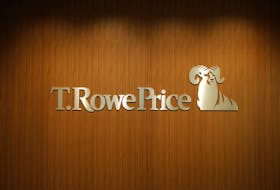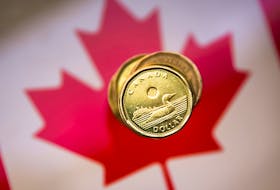It started with a car accident.
Beaver Bank, N.S. resident Angela MacKinnon-Daoust was left with the deductible to pay for the repairs and another $2,300 in bodywork needed to pass an upcoming vehicle inspection.
Strapped for cash, she put it on her credit card.
When that same car was totalled in another crash only three months later, the insurance money fell $400 short of what was still owed on it. MacKinnon-Daoust, then suffering from as-yet-undiagnosed clinical depression, felt the need to pick up her spirits.
So, she began to shop.
“You get a little high from buying small things, like a hairclip,” she said in an interview earlier this month.
In less than two years, those first few little things and subsequent purchases sent MacKinnon-Daoust’s credit card debt spiralling out of control.
She wasn’t alone.
John Eisner, president of Credit Counselling Services of Atlantic Canada, says consumer debt is at an all-time high in Canada. Even after excluding mortgages and car loans, the average client who walks through his company’s doors – by the time he realizes things are falling apart – is carrying a debt of $28,500.
“That’s unsecured debt … carrying an interest rate of 19 to 30 per cent interest,” said Eisner in an interview. “That’s a problem.”
According to credit rating agency Equifax Canada's latest national consumer trends report, the average consumer debt rose by 3.3 per cent in the second quarter of this year compared to the same period last year, climbing to $22,595 even after excluding mortgages.
Newfoundlanders are carrying more than that, at $23,627, and so are New Brunswickers who have an average consumer debt excluding mortgages of $23,221. Nova Scotians are less indebted than the national average with $22,504 and Islanders have the lowest average consumer debt in Atlantic Canada at $22,448.
But those debt loads are climbing.
In the second quarter of this year, all of the Atlantic Canadian provinces saw their average consumer debt grow by between 2.4 per cent in Newfoundland to three per cent in New Brunswick.
It’s too much for many Atlantic Canadians. The highest rate of delinquency in Canada on consumer debt is found in Nova Scotia, followed by New Brunswick. And all Atlantic Canadian provinces have a higher rate of delinquency on their consumer debt than the national average, according to the Equifax report.
Regina Malina, a senior director of data and analytics at the credit agency, says that even in the face of potential increases in interest rates, Canadians continue to borrow more than ever, leaving themselves susceptible to interest rate hikes.
“If the interest rates go up, there will be a lot of people running into trouble,” added Eisner. “In the last seven to eight years, interest rates have been at historic lows.”
Credit card companies are also demanding a lot less from consumers these days than they did only a decade ago, requiring them to pay only about 1.25 to 1.5 per cent of their credit card debt as a minimum payment every month. Ten years ago, those same financial institutions were asking for minimum payments of five per cent.
That easy credit, though, might not be around for all that much longer.
“When times get tough, the banks will assess their risk … and usually the way they do that is by raising their rates,” said Eisner.
Despite the spectre of looming interest rate hikes down the road, many Canadians use three or four credit cards and max them out, he said.
That’s what MacKinnon-Daoust did.
Using five credit cards, including a department store card with an interest rate of 28 per cent and four other cards charging 22 per cent interest, she racked up about $22,000 of debt.
At those rates of interest, she would have been trapped – if she continued to only make minimum payments – for what seemed to her like forever. Calls from debt collectors became her personal nightmare.
“I was ashamed to talk to someone about what I had done to myself and what I had done with my money. All that debt crushes you.”
Then, a debt collector threatened her with the loss of her home if she didn’t pay her bill.
MacKinnon-Daoust realized she needed help.
She found it at Credit Counselling Services, a company whose counsellors help those facing a choking credit card debt by working with clients to develop budgets and manage money.
The counselling company also helps clients negotiate a better repayment plan with credit card companies, although that almost always means giving up access to those cards.
“They pull together all of your debt and ration it out. This much goes to this company and that much to that company,” she said. “You pay back the full amount of what you owe but most credit card companies will close your account and bring the interest to zero.”
Spared of the interest charges, MacKinnon-Daoust was able to pay back her credit card debt in five years.
Credit card debt is often much the same for many people. Few people want to admit they’re drowning in high-interest-rate credit card debt. MacKinnon-Daoust, though, has been there. And she says talking about it and seeking out the services of a good financial adviser are a must.
“Don’t hesitate to ask for help,” she said. “When it comes to money, people are terrified to talk about it.”
Eisner blames a paucity of financial literacy courses in schools for much of the trouble facing Canadian consumers.
“Half of the people we see have university degrees. They’re not stupid … They just don’t have basic money management skills.”
Unfortunately for some people, they wait too long to get help. Roughly 18 per cent of people who seek help from Credit Counselling Services are instead referred to a bankruptcy trustee to prepare either a consumer proposal or file for bankruptcy.
Today, MacKinnon-Daoust is a buyer for the federal government and has a sideline small business selling kitchen tools, food products, and cookbooks.
Two months after paying off her credit card debt, she qualified for a car loan and bought herself a small car.
Now that her financial house is in order, MacKinnon-Daoust encourages others facing the same financial morass. She encourages everyone to follow no-nonsense, practical financial management, like drawing up a realistic household budget – and sticking to it.
“Try it for two months just so you can see where you spend your money,” she suggests.
Paying off high-interest credit cards with a line of credit against home equity at five or six per cent interest can be a good strategy to bring down the cost of interest payments, said Eisner.
But the trick with that strategy is to avoid using it only as a way of freeing up those credit cards and then using them to buy even more stuff.
It’s also a good idea to pay with cash.
“With cash, you see what you’re doing,” said MacKinnon-Daoust. “There are jar systems or envelope systems where you put money into them (and earmark those funds for specific things) and you can’t cross-spend.”
As for credit cards, she just suggests that people be careful.
“If you have to have a credit card, use only one and keep the limit fairly low, at a level you can repay.”
[email protected]








